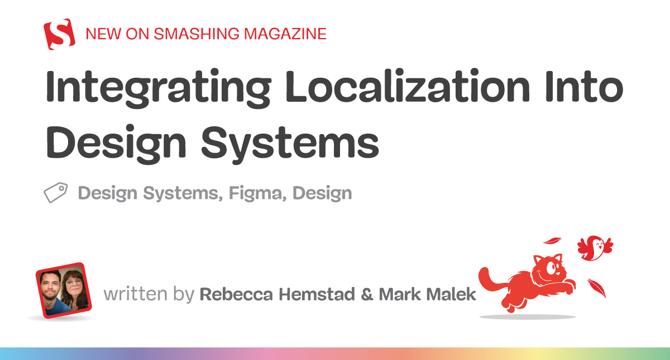Smashingmagazine
3w
172

Image Credit: Smashingmagazine
Integrating Localization Into Design Systems
- SAS designers at a global analytics company tackle challenges of localization in design systems.
- Using Figma libraries, they aim to design products that cater to diverse languages and cultures.
- Focusing on Localization (L10n) and Internationalization (I18n) principles is essential from the start.
- Introducing Figma Variables allows dynamic switching between themes, densities, and languages.
- Challenges in supporting multilingual design tokens and Figma Variables were identified.
- The team categorized design tokens and prioritized theme, density, and language switching in their setup.
- Implementing density switching led to restructuring JSON files for efficient token management.
- Cleaning up 'Ghost Variables' in Figma helped refine the design system for localization.
- Designing symbols for localization involved linking text layers to variables and testing for layout issues.
- Lessons learned emphasized early prioritization of localization, semantic tokens, and collaboration for successful multilingual design.
- Future directions include automatic mirrored layouts for RTL languages and enhanced Figma integration for improved localization processes.
Read Full Article
10 Likes
For uninterrupted reading, download the app